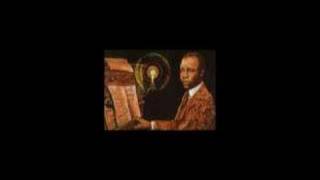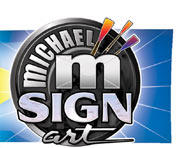| You are not logged in. | login to customize your own personal play list |
“Maple Leaf Rag” by Scott Joplin |
| United States Federal Trade Commission forbids anyone under 13 from viewing these music videos! |
| You are not logged in. | login to customize your own personal play list |
“Maple Leaf Rag” by Scott Joplin |
| United States Federal Trade Commission forbids anyone under 13 from viewing these music videos! |
 |
 |
 |
 |
You need Flash player 8+ and JavaScript enabled to view this video.
|
 |
 |
   |
 |

song info “Maple Leaf Rag” by Scott Joplin is a ragtime song.
Artist: Scott Joplin Genre: ragtime jazz Composer: Copyright © 18 September 1899 Scott Joplin Piano: Scott Joplin Date:: 1899 Number of listens: 15261 Current rank: 964 (updated weekly) Highest rank: 960 (play the video all the way through to register a vote for this song) Translations courtesy of Apple and Google. |
||
Summary quotation from Wikipedia:
The “Maple Leaf Rag” (copyright registered 18 September 1899) is an early ragtime musical composition for piano composed by Scott Joplin. It was one of Joplin’s early works, and became the model for ragtime compositions by subsequent composers. It is one of the most famous of all ragtime pieces. As a result Joplin was called the “King of Ragtime”. The piece gave Joplin a steady if unspectacular income for the rest of his life.
first edition cover
Despite ragtime’s decline after Joplin’s death in 1917, the “Maple Leaf Rag” continued to be recorded by many well-known artists. The Ragtime revival of the 1970s brought it back to mainstream public notice once again.
Background
third edition cover
The “Maple Leaf Rag” is associated with the city of Sedalia, Missouri, though there is no record of Joplin having a permanent residence there before 1904. Joplin arrived in Sedalia in 1894 as a touring musician and stayed with the family of Arthur Marshall, who later became one of Joplin’s students and a ragtime composer in his own right. Joplin performed as a solo musician at dances and at the major black clubs in Sedalia, including the “Maple Leaf Club”. It is possible that the rag was named after the Maple Leaf Club, although there is no direct evidence to prove the link, and there were many other possible sources for the name in and around Sedalia at the time.
Although there were hundreds of rags in print by the time of the “Maple Leaf Rag’s” publication, Joplin was not far behind. His first published rag was “Original Rags” (March 1899). The “Maple Leaf Rag” was already known in Sedalia prior to its publication in 1899; composer and pianist Brun Campbell claimed to have seen the manuscript of the work in around 1898. Prior to its publication, Joplin anticipated that the piece would be a success—he told Arthur Marshall that “The Maple Leaf will make me the king of ragtime composers”.
The exact circumstances which led to publication of the “Maple Leaf Rag” are unknown, and there are versions of the event which contradict each other. After approaching several publishers, Joplin signed a contract with John Stillwell Stark on 10 August 1899 for a 1% royalty on all sales of the rag, with a minimum sales price of $0.25. The “Maple Leaf Rag” was published between 10 August and 20 September 1899, when the United States Copyright Office received two copies of the score.
The rag was reissued in 1900 or 1901 with a new cover showing a green maple leaf and a photograph of Joplin. In 1903 Stark issued a “Maple Leaf Rag Song”, an arrangement of Joplin’s music with words by Sydney Brown.
StructureAA BB A CC DD
“Maple Leaf Rag” is a multi-strain ragtime march with athletic bass lines and offbeat melodies. Each of the four parts features a recurring theme and a striding bass line with copious seventh chords. The piece may be considered the ‘archetypal rag’ due to its influence on the genre; its structure was the basis for many other rags, including ‘Sensation’ by Joseph Lamb.
It is more carefully constructed than almost all the previous rags, and the syncopations, especially in the transition between the first and second strain, were novel at the time.
Generally, the piece is not considered difficult; however, one must have very good coordination in the left hand to perform the piece successfully, particularly for the Trio, which involves leaps of two octaves. When it was first published, it was considered significantly more difficult than the average Tin Pan Alley and early ragtime sheet music common at the time.
The “Gladiolus Rag”, a later composition by Joplin, is a developed variant of the Maple Leaf Rag, showcasing Joplin’s increasing musical sophistication, and is usually played at a somewhat slower tempo. In addition, the first strain of both Joplin’s “The Cascades” and “Sugar Cane” are also similar to “Maple Leaf Rag”’s first strain.
Legacy
There have been many claims about the sales of the “Maple Leaf Rag”, for example that 1 million copies of the sheet music were sold in the composer’s lifetime, making Scott Joplin the first musician to sell 1 million copies of a piece of instrumental music. Joplin’s first biographer Rudi Blesh wrote that during its first six months the piece sold 75,000 copies, and became “the first great instrumental sheet music hit in America”. However, research by Joplin’s later biographer Edward A. Berlin demonstrated that this was not the case; the initial print-run of 400 took one year to sell, and under the terms of Joplin’s contract with a 1% royalty would have given Joplin an income of $4, or approximately $110 in current value. Later sales were steady and would have given Joplin an income which would have covered his expenses; in 1909 estimated sales would have given him an income of $600 annually (approximately $15,331 in current prices).
—from Wikipedia (the Wikipedia:Text of Creative Commons Attribution-ShareAlike 3.0 Unported License applies to Wikipedia’s block of text and possible accompanying picture, along with any alterations, transformations, and/or building upon Wikipedia’s original text that ThisSideofSanity.com applied to this block of text)
The Americans with Disabilities Act (ADA) and U.S. Government Section 508 of the Rehabilitation Act of 1973 require that web sites provide transcripts of audio for the deaf.
We will be adding lyrics to all songs as fast as we can. Please be patient.
Bence: Amo esta canción.
To submit a comment, use the form below:
Please use the form (with the delay for a human to inspect it) because this website is attacked by more than 20 spam attempts per minute. The only way to keep you safe from the spam is by having human review.
 |
  |
|
If you spot an error in fact, grammar, syntax, or spelling, or a broken link, or have additional information, commentary, or constructive criticism, please contact us.
Copyright © 2014 Milo. All rights reserved. Todos Derechos Reservados. The copyrights on all source code and the data base belong to Milo and are used on this web site by permission.
The source code is at OSdata.com, released under Apache License 2.0.
Copyright 2012, 2013, 2014 Milo
Licensed under the Apache License, Version 2.0 (the “License”); you may not use this file except in compliance with the License. You may obtain a copy of the License at:
http://www.apache.org/licenses/LICENSE-2.0
Unless required by applicable law or agreed to in writing, software distributed under the License is distributed on an “AS IS” BASIS, WITHOUT WARRANTIES OR CONDITIONS OF ANY KIND, either express or implied. See the License for the specific language governing permissions and limitations under the License.
Enjoy the This Side of Sanity website Twitter feed.
Enjoy the This Side of Sanity Twitter feed.

|
player artwork by michaelm